Mad Hedge Technology Letter
December 2, 2024
Fiat Lux
Featured Trade:
(STICK WITH ENTERPRISE TECH IN 2025)
(HPE), (DELL), (TSLA), (NVDA)
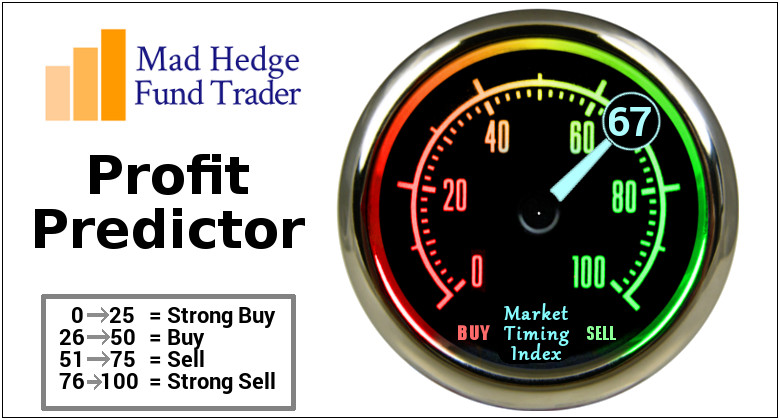
Mad Hedge Technology Letter
December 2, 2024
Fiat Lux
Featured Trade:
(STICK WITH ENTERPRISE TECH IN 2025)
(HPE), (DELL), (TSLA), (NVDA)

Although, on the surface, tech stocks might be performing quite well, we need to talk about an imminent issue that could affect them.
I would even say that I am quite surprised by how the year is panning out.
There was so much uncertainty going into this year, and the election was a brutal contest that was bitterly fought.
However, the election gave us a clear winner, triggering a short-term tsunami of capital into tech stocks with the likes of Tesla (TSLA) leading the charge.
Even institutional money from heavyweights like Blackrock and others poured into tech stocks like there was no tomorrow.
TSLA is up today again on more stock upgrades.
If one ever needed a skinny variety of reliable tech stocks, then investing capital in Nvidia, Tesla, and perhaps Netflix or a Meta would be a solid foundation.
It is not only the Midas touch in the tech world, with management at HP and Dell saying the computer and laptop business isn’t all too hot.
Revenue generated by Dell’s (DELL) PC business declined 1% to $12.1 billion in the fiscal third quarter, falling short of estimates. While sales in HP’s (HPE) PC unit rose 2% to $9.59 billion, missing forecasts.
The PC refresh cycle is pushing into next year (2025), said Dell management.
HP Chief Executive Officer Enrique Lores said in an interview that the release of Microsoft’s new edition of Windows software hasn’t fueled PC sales from corporate clients as quickly as in previous releases.
The market had seen a historic decline in recent years after a burst of demand for new laptops in the early months of the pandemic when students and corporate employees were stuck at home. While signs of a rebound began to materialize this year, shipments again dipped in the third quarter.
This type of narrative has been put in motion by the crowd who think a new administration and their immigration stance will cause rampant inflation in wages.
No doubt, a lot of changes will take place in the next 50 days and after, and that type of uncertainty could deliver us a sharp selloff if short-term pain is sensed by the market.
Comments from Best Buy already set a very low bar even lower, as the recession that was supposed to take place in 2018 could be sneaking up on us.
The unemployment rate is forecasted to peak at 4.4% and has been steadily trending higher, highlighting the weakening of the US consumer.
There is a good chance that in 2025, retail tech will be in a recession before enterprise tech and enterprise tech stocks will be the last bastion of a narrowing market growth.
The key signal to focus on is a big Bitcoin sell-off that could trigger a flight to safety.
As long as market action stays orderly, I expect the pain trade to go higher in tech stocks in an uneven way, and I would avoid any tech stocks directly connected to American retail shoppers.
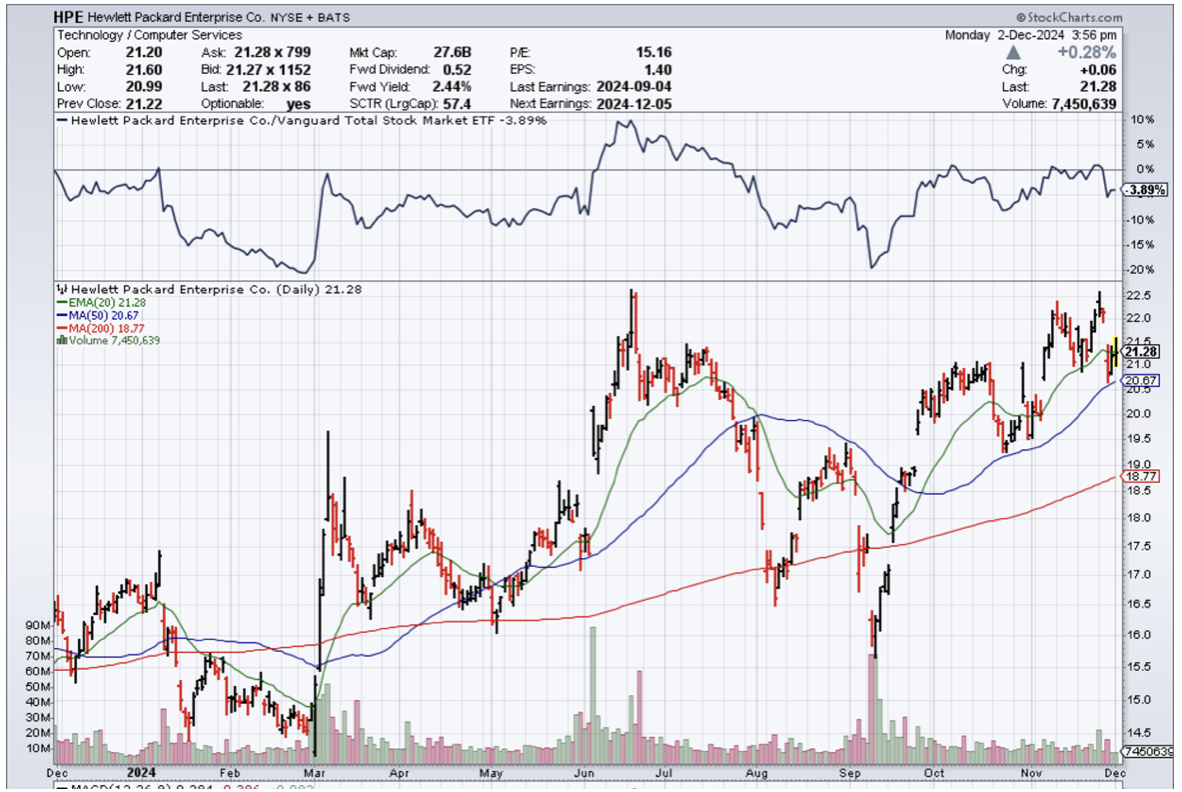
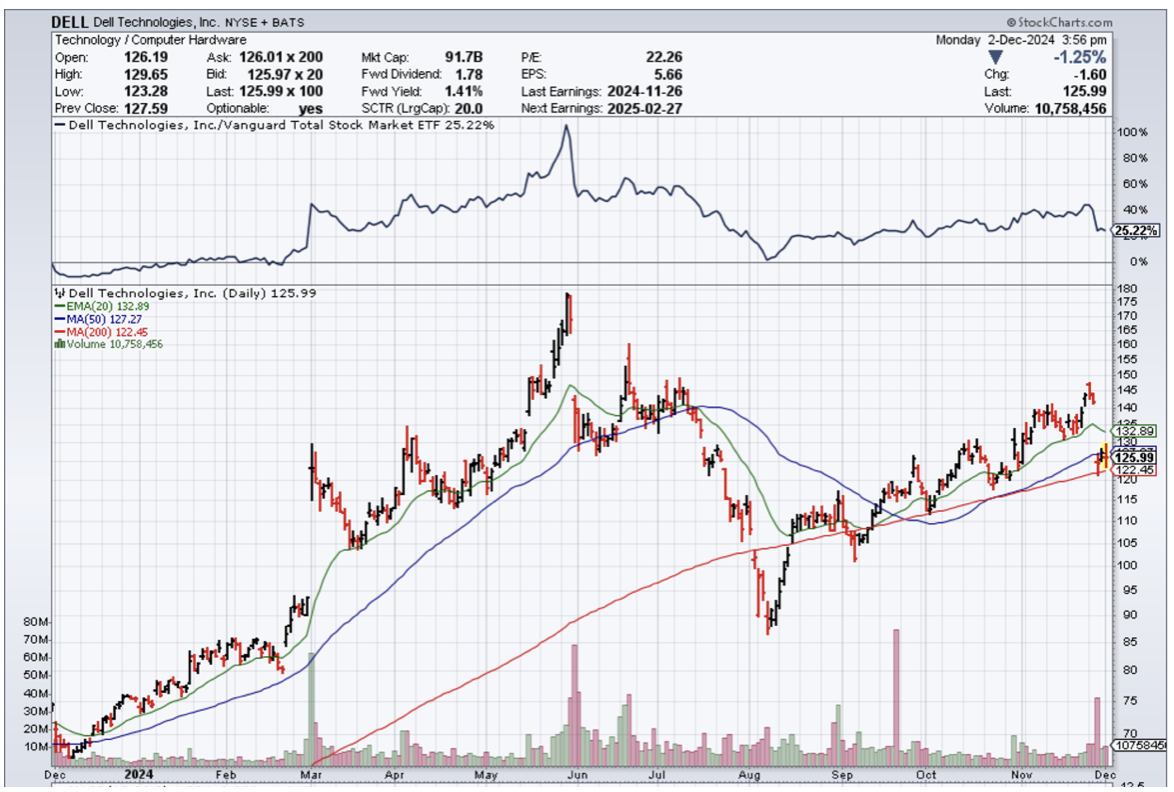
Mad Hedge Technology Letter
June 7, 2024
Fiat Lux
Featured Trade:
(HEWLETT PACKARD – REMEMBER THEM?)
(HPE), (SMCI), (NVDA), (ORCL), (DELL)
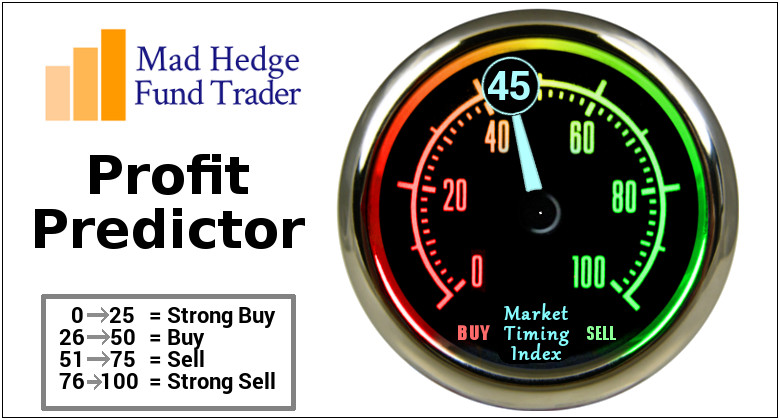
Artificial intelligence is not always the golden ticket, but some legacy companies, they are using this trend to springboard themselves back to relevancy.
Look at companies like Dell (DELL) or Oracle (ORCL) – they epitomize what I am talking about.
For years, these certain legacy tech firms were crowbarred into this narrow definition of some aging enterprise software company that was from yesteryear.
It was true back then but some have changed.
Hewlett Packard (HPE) is another Silicon Valley brand name that has reinvented itself for artificial intelligence and its stock price has reaped the dividends.
The stock has exploded to the $20 per share range after languishing in the teens for years.
HPE latest report was topped up with its better-than-expected revenue fueled by sales of servers built for artificial intelligence work.
The strong performance was due to the company’s server business, which generated revenue of $3.87 billion.
Sales of AI-oriented systems doubled from the first quarter to more than $900 million.
Increased demand and better availability of high-powered semiconductors from Nvidia (NVDA) led to an increase in AI systems sales.
HPE would be a good way to play the catch-up trade in AI servers compared with its peers in the server space, including Dell Technologies (DELL) and Super Micro Computer (SMCI).
HPE’s current backlog for AI systems is now $3.1 billion.
This is the first quarter HPE has broken out AI server revenue and investors likely welcome the increased disclosure.
The AI-server ramp-up is finally materializing.
The full-year forecast is underwhelming given the increased AI business, suggesting other business lines, such as networking, are dragging down the results.
I am not saying that HPE is the finished article right now and is a pure AI play. I am not. They have a lot to work on and that might be a generous statement to even say that.
There is still plenty to dislike about HPE who are saddled with legacy businesses that barely move the needle.
However, if HPE smartly harnesses resources right, I do believe they could eventually turn into an above-average AI play.
At this point, many tech companies view the participation of AI or not as an existential matter.
Many companies will get left behind and swept into the dustbin of history.
When the biggest tech companies in the world talk about AI constantly on their earnings call, it is not a head fake. This is the real deal so get with the program.
There are many different types of semiconductors with different levels of sophistication, from simple chips in kitchen appliances to cutting-edge graphics processing units (GPUs) used in artificial intelligence (AI) applications, as well as cryptocurrency mining.
In many of these use cases, semiconductor chips will need an AI server to act as storage for the data or some other similar function.
The data produced is substantially greater than analog chips and of higher quality.
We are still in the early innings of the AI revolution, so it is important to know which stocks possess an upward trajectory in terms of business models and sub-sectors.
In 2024, semiconductor chips and AI server stocks have made their stamp in the tech world and aren’t going away.
Remember that the trend is your friend and I wouldn’t fight this one. It’s a massive trend to fight and be on the wrong end.
Moving forward, I believe HPE will make meaningful optimization decisions to amplify its AI server business while minimizing its legacy divisions to the benefit of the future share price.
If they can somewhat achieve these results, the stock should easily rise by 3X.
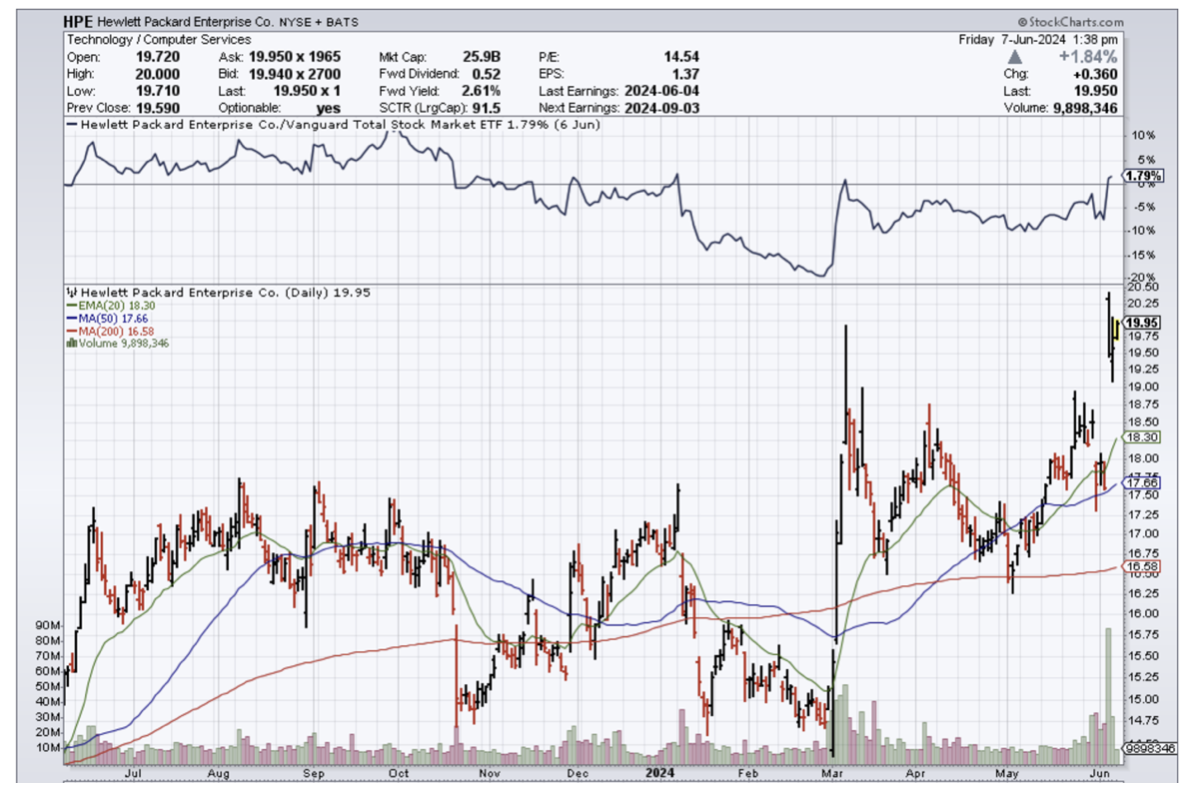
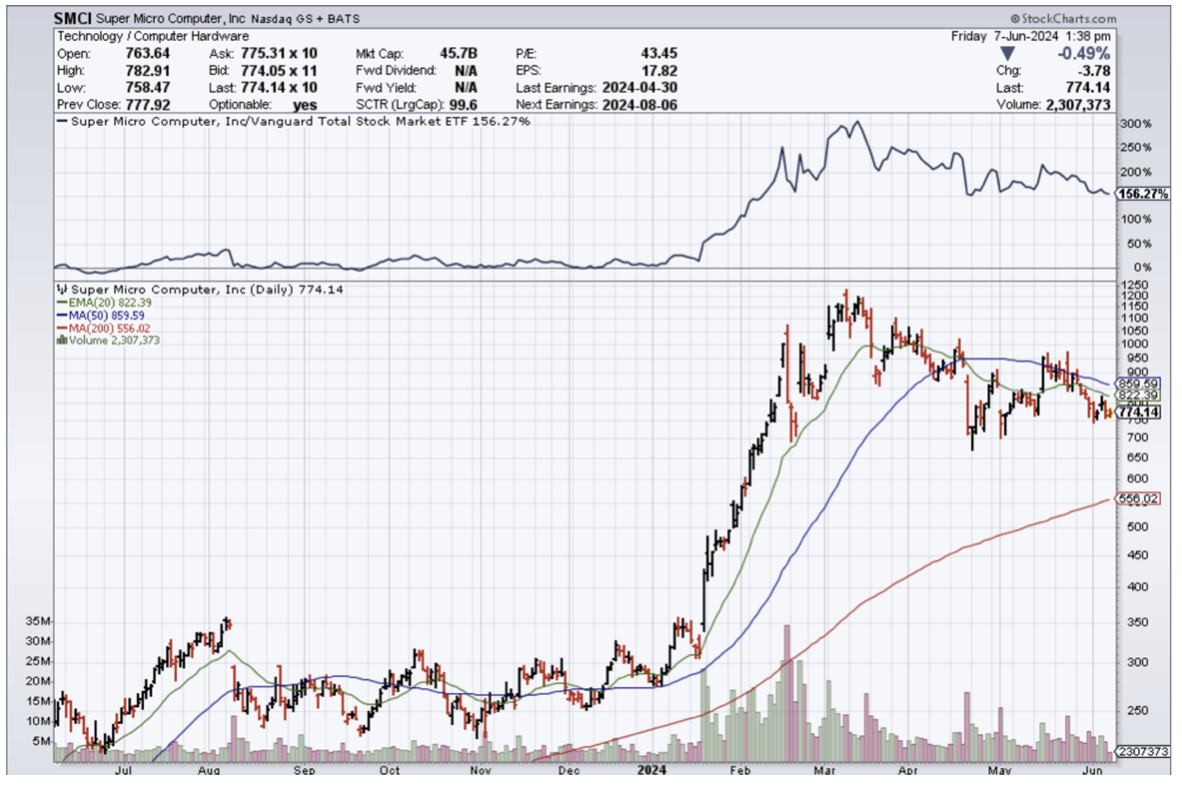
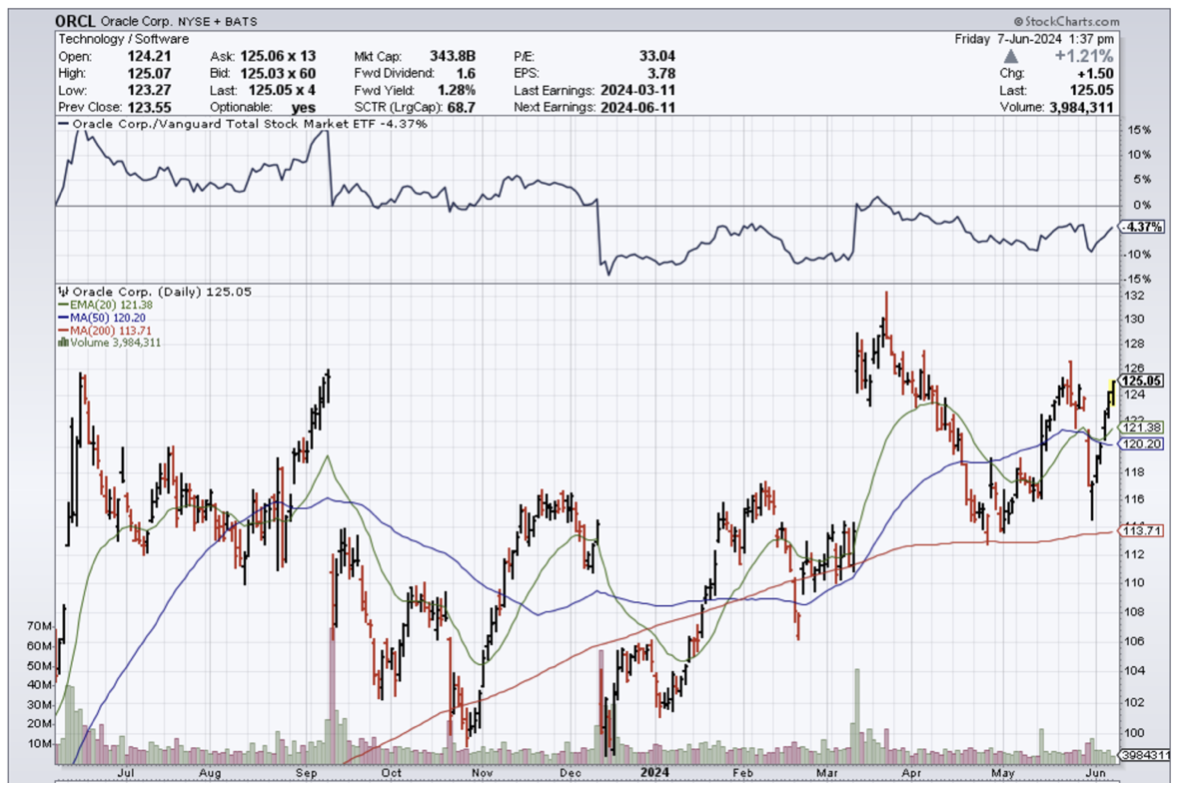
Global Market Comments
October 17, 2022
Fiat Lux
Featured Trade:
(MARKET OUTLOOK FOR THE WEEK AHEAD, or BLUNDER 3.0)
(RIVN), (TSLA), (V), (JPM), (AMAT), (HPE), (DELL), (KBH), (LEN)

There is no doubt whatsoever that the stock market tried to break down last week and failed. At worst, the Dow Average double bottomed at $29,600, the same level it reached on September 28.
And even that low was a mere 800 points lower than the one we set on June 14.
And that’s how it’s going to go.
Incremental new lows, followed by violent “rip your face off” rallies on enormous volume.
Until it ends.
That happens when markets start speculating about coming interest rate cuts sometime in 2023. And remember, you’re buying stocks for not what the economy is doing today, but for how well it will be performing in six to nine months.
You’re buying the future, not the present, or heaven forbid, the past.
That means you should use these throw-up-on-your-shoes days to scale into your favorite long-term companies. When markets inevitably rally, you can either sell for a short-term profit and rewind the video once again or keep it as part of a long-term holding.
It's a nice choice to have. I’ve been doing it all year.
With some of the greatest market volatility in market history, my October month-to-date performance ballooned to +5.00%.
I used last week’s extreme volatility to roll down strike prices for Tesla (TSLA) and JP Morgan (JPM) option spreads to manage my risk. I was still able to hang on to a 40% long position and threw out a new short in the S&P 500 at the end of Thursday.
My 2022 year-to-date performance ballooned to +75.06%, a new high. The Dow Average is down -18.48% so far in 2022. With the coming Friday options expiration, I will be up +76.49%.
It is the greatest outperformance on an index since Mad Hedge Fund Trader started 14 years ago. My trailing one-year return maintains a sky-high +78.54%.
That brings my 14-year total return to +587.62%, some 3.03 times the S&P 500 (SPX) over the same period and a new all-time high. My average annualized return has ratcheted up to +44.23%, easily the highest in the industry.
Remember that old 60/40 equity/bond investment strategy? The idea was that whenever stocks went down, the losses would be offset by the profits from rising bonds.
This year, it delivered the worst performance in 100 years, down 34.4% year-to-date. That is the inevitable end result of a decade of zero interest rates and free money that took everything up.
So what is the best strategy you could probably employ right now? A 60/40 strategy. Even I find myself checking out bond yields these days, where I got my start in life as a trader 50 years ago. Yes, before there were stocks, there were bonds. Junk is now yielding 10%. Remember, that means a holding doubles in value every six years.
The market is clearly in a mood to throw out the babies with the bathwater. I would be remiss not to mention the recent decline of Tesla posing one of its periodic tests of the faithful, now approaching a once unheard-of price earnings multiple of 30X.
Up until September 20, Elon Musk’s creation was almost immune to the bear market.
Then Twitter (TWTR) happened.
Musk agreed to take majority control of a $44 billion company, of which Elon himself is only contributing $16 billion. He sold Tesla shares last July to fund this. But the market wiped $333 billion, or 34.6%, off the market capitalization of the company. It is a wild overreaction to the move.
This has nothing to do with Tesla itself, as the richest man in the world is buying Twitter with his own pocket change. But it is undeniable that it will be a distraction of management time.
And here is all you need to know about Tesla. Tesla is the fastest growing large company in the world. Profit margins are increasing, thanks to the recent collapse of commodity prices. Unit sales will rise by 40% this year. Every time Tesla opens a new factory at a cost of $7 billion, it generates $15 billion of profit per year, forever!
Remember also, that the stock market gets an 800-pound gorilla off its back with the end of the midterm elections on November 8. It makes no difference who wins, a major uncertainty will be gone. That much IS certain.
And what happens when the Fed keeps interest rates too low for long, then raises them too much? It lowers them again too much, igniting a monster bull market in stocks. That’s also what you’re buying down here. That's what you get when you appoint a central bank governor with a political science major rather than PhDs and Nobel Prizes in Economics like the last ones.
Call it blunder 3.0.
Consumer Price Index Rockets Up to 8.6%, up 0.4% on the month and a new 40-year high. Stocks, bonds, crypto, and currencies were crushed and the US Dollar Soared. Look for new lows in stocks. Growth really took it on the nose. Expect another month of volatility until the next CPI report comes out.
Stocks Mount Historic Rally, gaining $1,420 points, or 5% of the intraday low. Stocks were down 500 in the wake of the CPI report, then up $1,420. It was mostly hedge short covering, as most institutions are too slow to react. Still, we now have a low to trade against.
The Fed Minutes are Out, and our central bank is clearly worried about doing too little than too much, when they are doing too much. At least they did six weeks, or 4,000 Dow points ago. The inflation goal is still 2.0%. Interest rates will go higher before they go lower.
Equity Inflows Hit a Record Last Week, the third highest week since 2008. Long term investors are willing to bottom fish here, even if the final bottom isn’t found for months.
Bond Liquidity Issues Haunting the Fed, and bids dry up in an endlessly falling market. The matter has been greatly exacerbated by a Fed that is now selling $95 billion a month as part of its quantitative tightening policy. It’s becoming increasingly difficult to move big blocks of bonds in a zero-bid market. Spreads are widening and size is shrinking. The bad news is that the worst is yet to come.
You Just Got an 8.7% Raise, if you are older than 61 and collecting Social Security. That is the payment increase that kicks in from January. Fortunately, some thoughtful person eons ago tied payments to the CPI, which is now going through the roof. I’m going to Hawaii with my money, even if the increase means that Social Security goes bankrupt by 2034, when I’m 82.
PC Sales Dive 19.5% in Q3, reaching only 68 million units. It’s the steepest decline since PC data collection began 30 years ago. And you wonder why they are selling the chip stocks so aggressively. High inventories are also a big problem. Lenovo was the top seller in the world at 20.2 million units, followed by Hewlett Packard’s (HPE) 17.6 million, and Dell (DELL) at 15.2 million.
Applied Materials Cuts Estimates, in line with everyone else in the industry. The new government export restrictions will cost it $250-$500 million in the current quarter. But how much is already in the price? Buy (AMAT) on dips.
Home Financing Pours into 5/1 ARMS, which can be had for a doable 5.56%. That compares to over 7.0% for the 30-year fixed, the highest since 2006. It will be low enough to keep homebuilders on life support for a couple of years Avoid (LEN) and (KBH).
REITS are Still Getting Slaughtered, with the plunge in the bond market today to multidecade lows. The REIT Index is down 30% this year, while the (SPY) is off only 21%. Real Estate Investment Trusts do best when interest rates are low. Too many investors piled into REITS in a desperate reach for yield. There’s a great trade here someday, but not yet.
My Ten-Year View
When we come out the other side of pandemic and the recession, we will be perfectly poised to launch into my new American Golden Age, or the next Roaring Twenties. With oil in a sharp decline and technology hyper-accelerating, there will be no reason not to. The Dow Average will rise by 800% to 240,000 or more in the coming decade. The America coming out the other side will be far more efficient and profitable than the old. Dow 240,000 here we come!
On Monday, October 17 at 8:30 AM, the New York Empire State Manufacturing Index for September is released.
On Tuesday, October 18 at 7:00 AM, the D for September is out.
On Wednesday, October 19 at 8:30 AM, Housing Starts and Permits for September are published.
On Thursday, October 20 at 8:30 AM, Weekly Jobless Claims are announced. At 10:00 AM, we get Existing Home Sales for September.
On Friday, October 21 at 2:00 PM, the Baker Hughes Oil Rig Count is out.
As for me, it was in 1986 when the call went out at the London office of Morgan Stanley for someone to undertake an unusual task. They needed someone who knew the Middle East well, spoke some Arabic, was comfortable in the desert, and was a good rider.
The higher-ups had obtained an impossible-to-get invitation from the Kuwaiti Royal family to take part in a camel caravan into the Dibdibah Desert. It was the social event of the year.
More importantly, the event was to be attended by the head of the Kuwait Investment Authority, who ran over $100 billion in assets. Kuwait had immense oil revenues, but almost no people, so the bulk of their oil revenues were invested in western stock markets. An investment of goodwill here could pay off big time down the road.
The problem was that the US had just launched air strikes against Libya, destroying the dictator, Muammar Gaddafi’s royal palace, our response to the bombing of a disco in West Berlin frequented by US soldiers. Terrorist attacks were imminently expected throughout Europe.
Of course, I was the only one who volunteered.
My managing director didn’t want me to go, as they couldn’t afford to lose me. I explained that in reviewing the range of risks I had taken in my life, this one didn’t even register. The following week found me in a first-class seat on Kuwait Airways headed for a Middle East in turmoil.
A limo picked me up at the Kuwait Hilton, just across the street from the US embassy, where I occupied the presidential suite. We headed west into the desert.
In an hour, I came across the most amazing sight - a collection of large tents accompanied by about 100 camels. Everyone was wearing traditional Arab dress with a ceremonial dagger. I had been riding horses all my life, camels not so much. So, I asked for the gentlest camel they had.
The camel wranglers gave me a tall female, which was more docile and obedient than the males. Imagine that! Getting on a camel is weird, as you mount them while they are sitting down. My camel had no problem lifting my 180 pounds.
They were beautiful animals, highly groomed, and in the pink of health. Some were worth millions of dollars. A handler asked me if I had ever drunk fresh camel milk, and I answered no, they didn’t offer it at Safeway. He picked up a metal bowl, cleaned it out with his hand, and milked a nearby camel.
He then handed me the bowl with a big smile across his face. There were definitely green flecks of manure floating on the top, but I drank it anyway. I had to lest my host to lose face. At least it was white. It was body temperature warm and much richer than cow’s milk.
The motion of a camel is completely different from a horse. You ride back and forth in a rocking motion. I hoped the trip was short, as this ride had repetitive motion injuries written all over it. I was using muscles I had never used before. Hit your camel with a stick and they take off at 40 miles per hour.
I learned that a camel is a super animal ideally suited for the desert. It can ride 100 miles a day, and 150 miles in emergencies, according to TE Lawrence, who made the epic 600-mile trek to Aquaba in only four weeks in the heat of summer. It can live 15 days without water, converting the fat in its hump.
In ten miles, we reached our destination. The tents went up, clouds of dust rose, the camels were corralled, and the cooking began for an epic feast that night.
It was a sight to behold. Elaborately decorated huge five wide bronze platers were brought overflowing with rice and vegetables, and every part of a sheep you can imagine, none of which was wasted. In the center was a cooked sheep’s head with the top of the skull removed so the brains were easily accessible. We all ate with our right hands.
I learned that I was the first foreigner ever invited to such an event, and the Arabs delighted in feeding me every part of the sheep, the eyes, the brains, the intestines, and gristle. I pretended to love everything, and lied back and thought of England. When they asked how it tasted, I said it was great. I lied.
As the evening progressed, the Johnny Walker Red came out of hiding. Alcohol is illegal in Kuwait, and formal events are marked by copious amounts of elaborate fruit juices. I was told that someone with a royal connection had smuggled in an entire container of whiskey and I could drink all I wanted.
The next morning I was awoken by a bellowing camel and the worst headache in the world. I threw a rock at him to get him to shut up and he sauntered over and peed all over me.
The things I did for Morgan Stanley!
Four years later, Iraq invaded Kuwait. Some of my friends were kidnapped and held for ransom, while others were never heard from again.
The Kuwaiti government said they would pay for the war if we provided the troops, tanks, and planes. So they sold their entire $100 million investment portfolio and gave the money to the US.
Morgan Stanley got the mandate to handle the liquidation, earning the biggest commission in the firm’s history. No doubt, the salesman who got the order was considered a genius, earned a promotion, and was paid a huge bonus.
I spent the year as a Marine Corps captain, flying around assorted American generals and doing the odd special opp. I got shot down and still set off airport metal detectors. No bonus here. But at least I gained insight and an experience into a medieval Bedouin lifestyle that is long gone.
They say success has many fathers. This is a classic example.
You can’t just ride out into the Kuwait desert anymore. It is still filled with mines planted by the Iraqis. There are almost no camels left in the Middle East, long ago replaced by trucks. When I was in Egypt in 2019, I rode a few mangy, pitiful animals held over for the tourists.
When I passed through my London Club last summer, the Naval and Military Club on St. James Square, who’s portrait was right at the front entrance? None other than that of Lawrence of Arabia.
It turns out we were members of the same club in more ways than one.
Stay healthy,
John Thomas
CEO & Publisher
The Diary of a Mad Hedge Fund Trader

John Thomas of Arabia

Checking Out the Local Camel Milk

This One Will Do

Traffic in Arabia

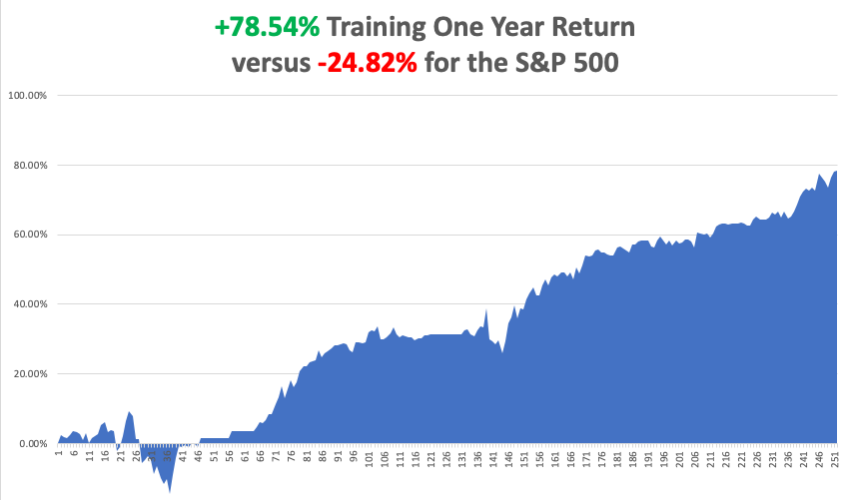
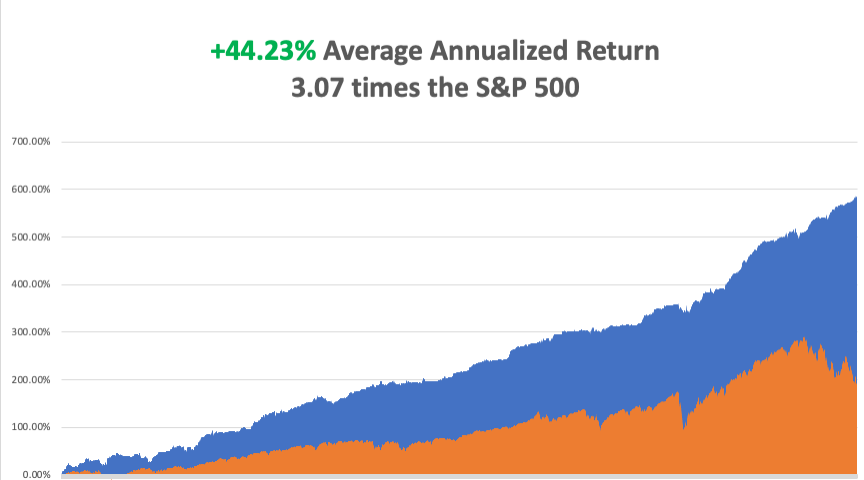
Mad Hedge Technology Letter
October 9, 2018
Fiat Lux
Featured Trade:
(LIVING ON THE EDGE),
(AMZN), (MSFT), (HPE), (GOOGL)

What is Edge Computing?
Edge computing is processing data at the edge of your network.
The data being generated will not only occur in a centralized data-processing storage server anymore, but at different decentralized locations closer to the point of data generation.
This is what everyone is talking about and is an epochal development for tech companies and the businesses they run.
The last generation of IT saw a massive migration to the cloud as centralized servers stored the sudden hoard of data that never existed before.
Edge computing bolsters data performance, boosts reliability, and cuts the costs of operating apps by curtailing the distance data must flow which effectively reduces latency and bandwidth headaches.
Edge computing is revolutionizing IT infrastructure as we know it.
No longer will we be forced to use these monolith-like giant server farms for all our data needs.
Epitomizing the Silicon Valley culture of becoming faster and more agile to disrupt, tech infrastructure is getting the same potent cocktail of performance enhancers underlying the same characteristics.
According to research firm Gartner, around 80% of enterprises will shutter legacy data servers by 2025, compared to 10% in 2018.
Keeping the data near the points of data creation is the logical step to enhance and optimize data processes.
Cloud computing depends on superior bandwidth to handle the data load.
This can create a severe bottleneck if bombarded with a heavy dose of devises all communicating with the centralized servers.
The edge computing industry already in the initial stages of ramping up will be worth $6.72 billion by 2022, up from $1.47 billion in 2017.
Underpinning this crucial IT is the imminent inauguration of 5G networks powering IoT devices.
Simply put, the amount of raw data which will need swift processing is about to explode. Relying on a slower, centralized servers is not the solution, and the edge offers a suitable solution to accommodate the new generation of technology.
And as technology starts to permeate every corner of the globe, data will need to be instantaneously processed locally in cutting-edge technology such as self-driving cars.
Waiting on communicating with a centralized server in another continent is just not plausible.
A self-driving car only has milliseconds to react in hazardous conditions.
Other critical and data heavy operations such as wind turbines, medical robots, airplanes, oil rigs, mining vehicles, and logistics infrastructure only function if operated at peak levels and an interruption to connectivity could be fatal.
Telecom companies and IT firms will experience the biggest sea of changes from edge computing in the next five years.
These two sectors are confronting a significant ramp up in network load and will find it challenging to deliver the results to operate the apps and services they are responsible to run.
This new IT technology is the answer.
The industry adopting edge computing the fastest is retail because of the troves of data collected by IoT sensors and cameras.
Companies will be able to analyze the performance of products and edge computing is the technology that will capture the data.
The adoption of edge computing will perfectly take advantage of the boom in IoT devices and uptick of internet speeds through 5G.
Sales of PC’s, tablets, and smartphones have matured, and aren’t seeing the same pop in growth rates like before.
However, the IoT industry will expand by 30% in the next five years boding well for the broad-based integration of edge computing.
In total, the number of connected devices in the next five years will balloon from 17.5 billion in 2017 to over 31 billion in 2023.
The first iteration of 5G IoT devices will be on the market in 2020 deploying industrial process monitoring and control.
This is not a flash in the plan technology and many firms already or are about to roll-out an edge computing strategy.
In a recent report, 72.7% of tech firms already possess a solid edge computing plan or it is in the works.
If you include all the tech firms who expect to invest in edge computing in the next year, the number catapults to 93.3%.
The same survey continued to delve into the mindset of edge computing for tech management by asking about the importance of the technology.
Over 70% of firms characterized edge computing as important, bifurcated into two categories with the first being “critically important” which 22.2% of respondent agreed with.
Another 49.6% of respondent described edge computing as “very important.”
Firms cited that improved application performance is the largest benefit of edge computing followed by real time data analytics and data streaming.
It is not the death of cloud computing yet.
Even though centralized, slower, and negatively affected by long distance, cloud computing still has a place in the future of IT.
About two-thirds of tech firms plan to utilize a hybrid centralized cloud – edge computing strategy.
Even if they did not combine this strategy, companies would most likely separate the operations responsible for two distinct set of tasks filtered by the level of time sensitivity.
The overwhelming and imminent adoption of IoT devices means IT departments are crafting a substantially higher budget for edge computing to satisfy their operational needs.
Large recipients of this technology will turn out to be companies related to manufacturing, smart cities and transportation as well as energy and healthcare.
This technology really cuts across the entire spectrum of global industries.
Data usually does not discriminate, and applications of new tech is fueling a rapid rise of performance optimization that no other sectors can claim.
Let’s do a quick rundown of the edge computing players.
The three cloud behemoths of Amazon Web Services (AWS), Microsoft (MSFT) Azure, and Google (GOOGL) Cloud are constructing edge gateways and edge analytics into their IoT offerings aiding workload distribution across edge and cloud services.
Microsoft has over 300 edge computing patents and launched its Azure IoT Edge service integrating container modules, an edge runtime, and a cloud-based management interface.
Amazon Web Services offers AWS CloudFront content delivery infrastructure and AWS Greengrass IoT service building on the momentum of pioneering centralized cloud technology.
Dell’s IoT division invested $1 billion in R&D to help drive Edge Gateways and VMware's Pulse IoT Center.
Hewlett Packard Enterprise (HPE) devoted $4 billion to its edge network portfolio. HPE operates edge services, mini-data centers, and smart routers.
These are just some of the initiatives from some of the main players in the field.
Expect companies to become a lot more connected while possessing the speed, high performance, and agility to optimally entertain this new-found connectivity.
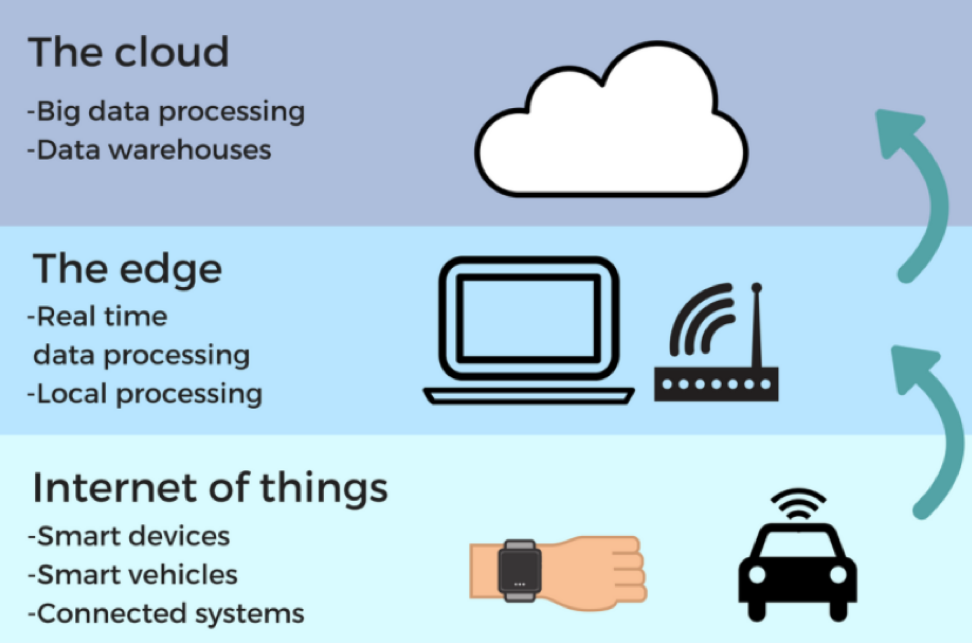
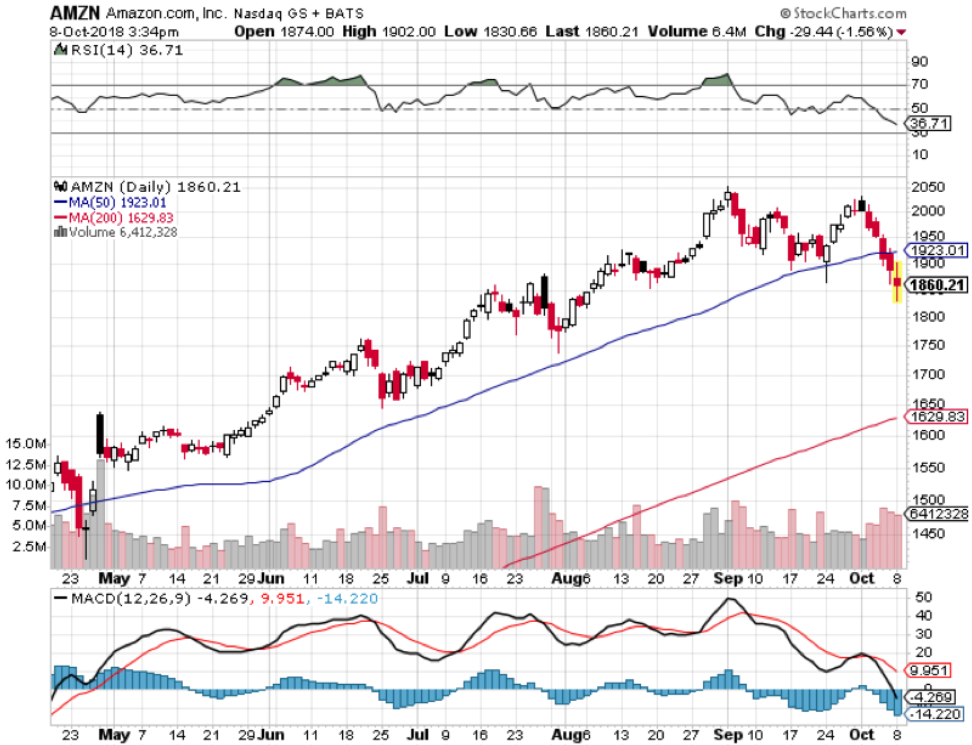
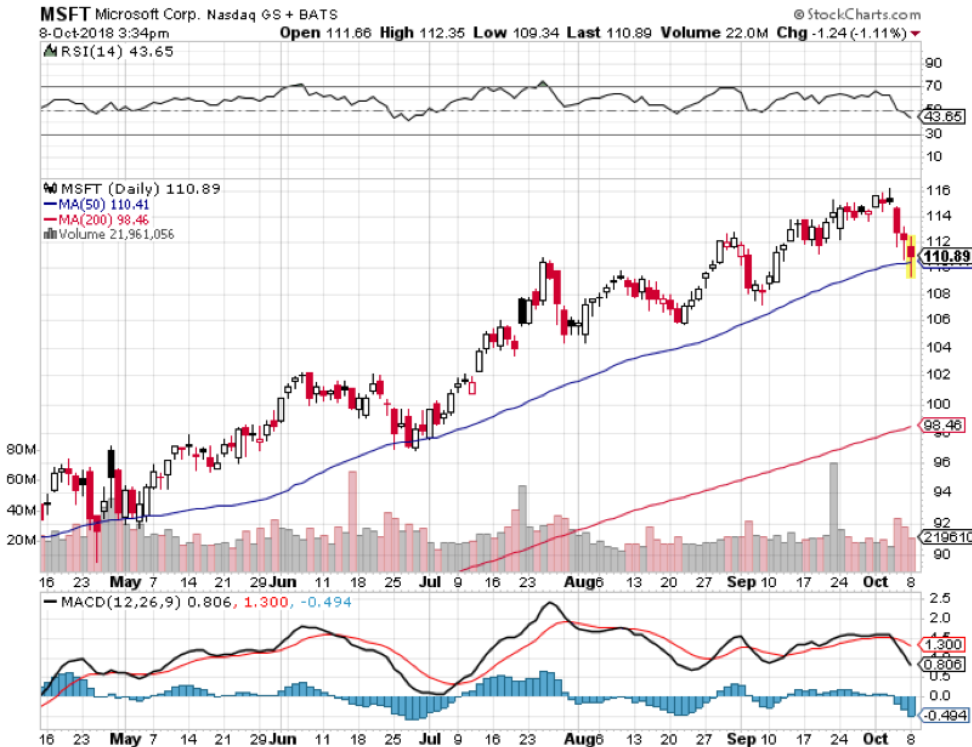
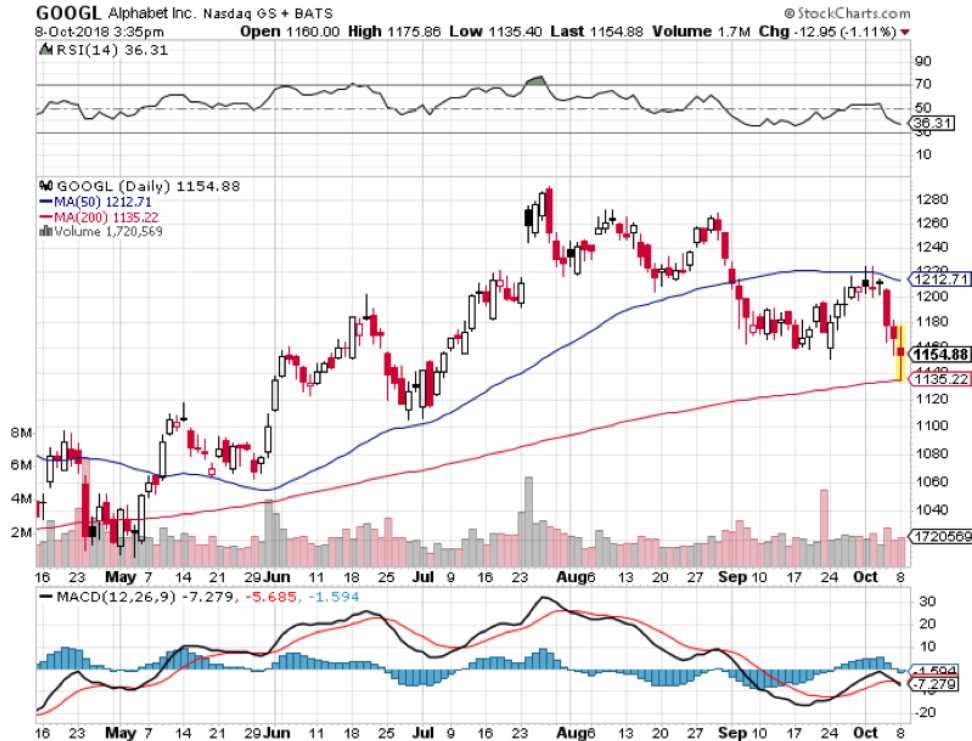
Legal Disclaimer
There is a very high degree of risk involved in trading. Past results are not indicative of future returns. MadHedgeFundTrader.com and all individuals affiliated with this site assume no responsibilities for your trading and investment results. The indicators, strategies, columns, articles and all other features are for educational purposes only and should not be construed as investment advice. Information for futures trading observations are obtained from sources believed to be reliable, but we do not warrant its completeness or accuracy, or warrant any results from the use of the information. Your use of the trading observations is entirely at your own risk and it is your sole responsibility to evaluate the accuracy, completeness and usefulness of the information. You must assess the risk of any trade with your broker and make your own independent decisions regarding any securities mentioned herein. Affiliates of MadHedgeFundTrader.com may have a position or effect transactions in the securities described herein (or options thereon) and/or otherwise employ trading strategies that may be consistent or inconsistent with the provided strategies.
This site uses cookies. By continuing to browse the site, you are agreeing to our use of cookies.
OKLearn moreWe may request cookies to be set on your device. We use cookies to let us know when you visit our websites, how you interact with us, to enrich your user experience, and to customize your relationship with our website.
Click on the different category headings to find out more. You can also change some of your preferences. Note that blocking some types of cookies may impact your experience on our websites and the services we are able to offer.
These cookies are strictly necessary to provide you with services available through our website and to use some of its features.
Because these cookies are strictly necessary to deliver the website, refuseing them will have impact how our site functions. You always can block or delete cookies by changing your browser settings and force blocking all cookies on this website. But this will always prompt you to accept/refuse cookies when revisiting our site.
We fully respect if you want to refuse cookies but to avoid asking you again and again kindly allow us to store a cookie for that. You are free to opt out any time or opt in for other cookies to get a better experience. If you refuse cookies we will remove all set cookies in our domain.
We provide you with a list of stored cookies on your computer in our domain so you can check what we stored. Due to security reasons we are not able to show or modify cookies from other domains. You can check these in your browser security settings.
These cookies collect information that is used either in aggregate form to help us understand how our website is being used or how effective our marketing campaigns are, or to help us customize our website and application for you in order to enhance your experience.
If you do not want that we track your visist to our site you can disable tracking in your browser here:
We also use different external services like Google Webfonts, Google Maps, and external Video providers. Since these providers may collect personal data like your IP address we allow you to block them here. Please be aware that this might heavily reduce the functionality and appearance of our site. Changes will take effect once you reload the page.
Google Webfont Settings:
Google Map Settings:
Vimeo and Youtube video embeds:
